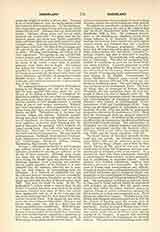

Gregorian Chant. The name is often taken as synonymous with plain chant (q.v.), comprising not only the Church music of the early Middle Ages, but also later compositions (elaborate melodies for the Ordinary of the Mass, sequences, etc.) written in a similar style down to the sixteenth century and even in modern times. In a stricter sense Gregorian chant means the Roman form of early plain chant as distinguished from the Ambrosian, Gallican, and Mozarabic chants, which were akin to it, but were gradually supplanted by it from the eighth to the eleventh century. Of the Gallican and Mozarabic chants only a few remains are extant, but they were probably closely related to the Ambrosian chant. Of the latter, which has maintained itself in Milan up to the present day, there are two complete manuscripts belonging to the thirteenth and fourteenth centuries respectively, and a considerable number belonging to the fifteenth and sixteenth centuries. An incomplete manuscript belongs to the twelfth century. It is at present in the British Museum and has been published in the fifth volume of the “Paleographie musicale”. All these manuscripts contain the chants both for the Office and for the Mass. The Office chants are antiphons and responses, as in the Roman books. The Mass chants are Ingressa (corresponding to the Introit, but without psalm), Psalmellus (Gradual), Cantus (Tract), Offertory, Transitorium (Communion), and, in addition, two antiphons having no counterpart in the Gregorian Mass, one post Evangelium, the other the Confractorium. There are, further, a few Alleluia verses and antiphons ante Evangelium. Musically it can easily be observed that the syllabic pieces are often simpler, the ornate pieces more extended in their melismata than in the Gregorian chant. The Gregorian melodies, however, have more individuality and characteristic expression. Though it is very doubtful whether these Ambrosian melodies date back to the time of St. Ambrose, it is not improbable that they represent fairly the character of the chant sung in Italy and Gaul at the time when the cantilena romance superseded the earlier forms. The frequent occurrence of cadences founded on the cursus at all events points to a time before the latter went out of use in literary composition, that is before the middle of the seventh century. (See Gatard in “Dict. d’arch. chret.”, s.v. “Ambrosien (chant)” and Mocquereau, “Notes sur l’Influence de l’Accent et du Cursus toniques Latins dans le Chant Ambrosien” in “Ambrosiana”, Milan, 1897.)
The name Gregorian chant points to Gregory the Great (590-604), to whom a pretty constant tradition ascribes a certain final arrangement of the Roman chant. It is first met in the writings of William of Hirschau, though Leo IV (847-855) already speaks of the cantus Sti. Gregorii. The tradition mentioned was questioned first by Pierre Gussanville, in 1675, and again, in 1729, by George, Baron d’Eckhart, neither of whom attracted much attention. In modern times Gevaert, president of the Brussels music school, has tried to show, with a great amount of learning, that the compilation of the Mass music belongs to the end of the seventh or the beginning of the eighth century. His arguments led to a close investigation of the question, and at present practically all authorities, including, besides the Benedictines, such men as Wagner, Gastoue, and Frere, hold that the large majority of plain-chant melodies were composed before the year 600.
The principal proofs for the Gregorian tradition may be summarized thus: (a) The testimony of John the Deacon, Gregory’s biographer (c. 872), is quite trustworthy. Amongst other considerations the very modest claim he makes for the saint, “antiphonarium centonem compilavit” (he compiled a patch-work antiphonary), shows that he was not carried away by a desire to eulogize his hero. There are several other testimonies in the ninth century. In the eighth century we have Egbert and Bede (see Castoue, “Les Origines”, etc., 87 sqq). The latter in particular, speaks of one Putta, who died as bishop in 688, “maxime modulandi in ecclesia more Romanorum peritus, quern a discipulis beati papm Gregorii didicerat”. In the seventh century we have the epitaph of Honorius, who died in 638 (Gastoue, op. cit., 93):
Divino in carmine pollens
Ad vitam pastor ducere novit ovis
Namque Gregorii tanti vestigia iusti
Dum sequeris cupiens meritumque geris that is: “Gifted with divine harmony the shepherdleads his sheep to life… for while following the footsteps of holy Gregory you have won your reward.”
According to this it was thought in Rome, less than forty years after the death of St. Gregory, that the greatest praise for a music-loving pope was to compare him to his predecessor Gregory. (b) The feasts known to have been introduced after St. Gregory use in the main melodies borrowed from older feasts. See the detailed proof for this in Frere’s “Introduction”. (c) The texts of the chants are taken from the “Itala” version, while as early as the first half of the seventh century St. Jerome’s correction had been generally adopted. (d) The frequent occurrence in the plain-chant melodies of cadences moulded on the literary cursus shows that they were composed before the middle of the seventh century, when the cursus went out of use.
H. BEWERUNGE

